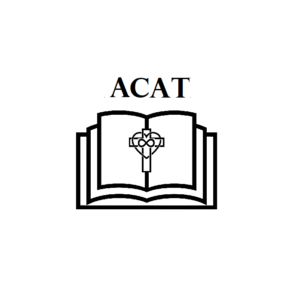In exploring God’s infinite perfection, the Baltimore Catechism leads us to three more attributes to ponder, and all in one sentence. Question 20 of Lesson Two explores the style in which God governs his creation by asking if God is just, holy and merciful. The answer given is a threefold, interrelated “yes,” with each attribute explicitly defined:
Just: Providing what is deserved, whether merit or punishment
Holy: Exalted in goodness
Merciful: Less exacting than justice demands
The Baltimore text gives an example of a judge in a court of law who is motivated by wisdom and virtue. A criminal found guilty in this court will be sentenced according to what is right – no more, no less. Occasionally, circumstance will arise where the person’s guilt is mitigated by factors beyond control, such as impaired thinking, ignorance of the law or extreme and immediate need. In such cases, a just judge would show mercy by overriding the typical sentence with something more fitting, and in no way does this suggest the judge is corrupt or bending any rules. A just judge follows the rules. A holy judge asks what is morally right. A merciful judge considers each person’s humanity and frailty, and keeps or adjusts decisions based on what will lead that person to a better way of life.
When taken together, these three attributes form a solid platform of checks and balances. Any overreliance on one detracts from the ability of the others to achieve their intention. God’s justice is no less real than God’s mercy, yet neither dominate, nor do they switch off and on. All three operate simultaneously at any given moment: justice and mercy bound together in holiness. However many sermons, books and homilies may focus on one aspect over the other, the reality is a constant, perfect and simultaneous triad.
Our post last week considered God in the spiritual tradition of St. Thorlak, which portrays Him against the backdrop of His purpose, which is LOVE. God brought creation into existence with love, through love and for love… so, it ought to follow that God governs creation likewise: with love, through love and for love. This is where we can find a solution among those who assert one aspect of God’s governance over another (that is, the fire-and-brimstone image on the one hand, and the none-are-ever-condemned image on the other). LOVE is what motivates and binds justice, holiness and mercy into one cohesive truth. 1 John 4:18 shows how this works: “There is no fear in love. But perfect love drives out fear, because fear has to do with punishment.” If God is wrathful, there is reason to be afraid – either fearing God’s punishment for what we have done, or fearing that we can never reach or maintain a level of goodness to stay in the safe zone out of God’s way. Likewise, if God holds none of us to any standard of virtue, nothing in any other part of the catechism, or any religious teaching, makes sense. Some will say that Jesus’ death erased sin and guarantees salvation for all, even to the point of eliminating the concept of hell or damnation. That also fails to hold up under scrutiny and test, and it gives rise to a different kind of fear – that of everyone making up their own rules, justifying themselves without consequence, and gradually losing sight of the common good.
Perfect love casts out fear. If God is the essence of love, there ought to be no fear or chaos in God’s governance. The triad of justice and mercy bound by holiness is perfectly balanced, with neither fear of wrath nor moral chaos. Loving justice defends those who are abused and restores what is taken by holding abusers accountable. Loving mercy considers those who stand accused and invites them to choose the better way before the evil of their actions is locked in. Both exist simultaneously. Nobody loses. Those who decline God’s invitation to holiness reap the fullness of justice… and, those who accept God’s invitation to holiness reap the fullness of mercy.

